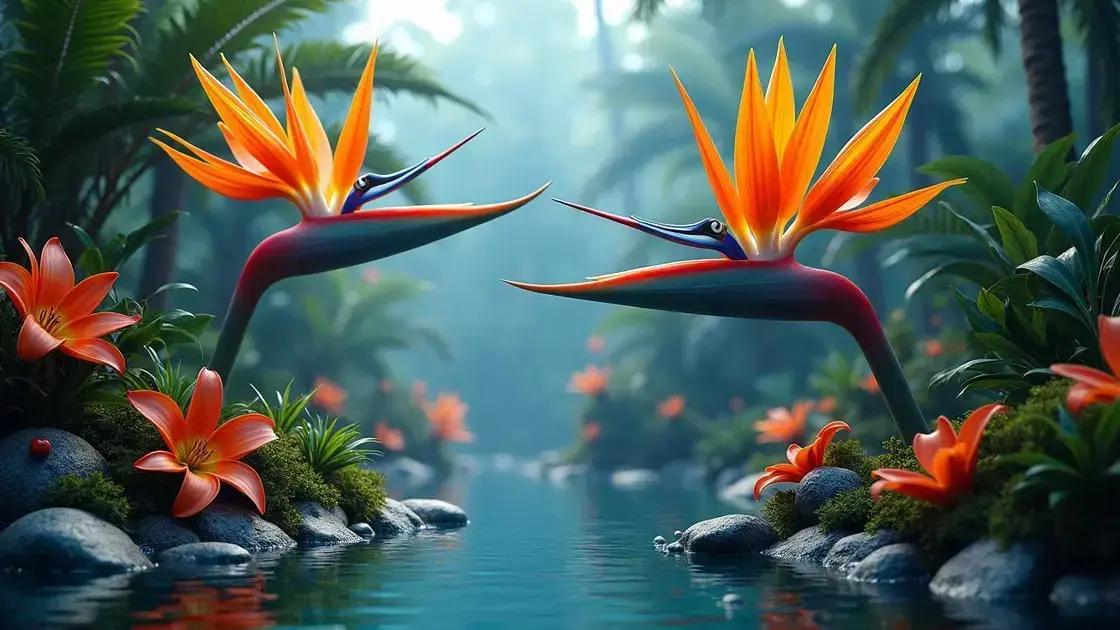How to Take Care of Birds of Paradise Plant: 5 Essential Tips
How to take care of birds of paradise plant is a question that many gardening enthusiasts ponder. Discovering the right tips can transform your plant into a stunning focal point in your space. Let’s explore how you can nurture this tropical beauty with essential techniques that ensure vibrant growth and longevity.
Table of Contents
ToggleWatering requirements for the birds of paradise
Watering requirements for the birds of paradise are crucial to promoting healthy growth and stunning blooms. These tropical plants thrive in moisture-rich conditions, but it’s essential to find the right balance to avoid overwatering or underwatering.
Understanding the watering needs
Birds of paradise plants prefer well-draining soil that retains some moisture. Here are the key factors to consider:
- Soil moisture: Keep the soil consistently moist but never soggy.
- Watering frequency: Typically, watering every 1-2 weeks is sufficient, depending on humidity and temperature.
- Seasonal adjustments: In warmer months, increase the frequency, while in cooler months, reduce watering.
Signs of overwatering and underwatering
Recognizing the signs of improper watering can help you maintain your plant’s health:
- Overwatering: Yellowing leaves, root rot, and a foul smell.
- Underwatering: Wilting leaves, brown tips, and a dry, cracked surface.
Best practices for watering birds of paradise plants
Follow these best practices to ensure your plant thrives:
- Water deeply to encourage strong root development.
- Use room temperature water to avoid shocking the plant.
- Allow the top inch of soil to dry out between watering sessions.
- Monitor humidity levels; consider misting to provide additional moisture.
Additionally, you can learn more about exploring indoor gardening techniques for optimal plant care.
Fertilizing for moisture retention
In conjunction with proper watering, regular fertilization helps your birds of paradise plant maintain healthy foliage and vibrant blooms. Use a balanced fertilizer every 4-6 weeks during the growing season.
With these watering requirements in mind, you can create an ideal environment for your birds of paradise to flourish, enriching your indoor space.
Best soil types for optimal growth

Best soil types for optimal growth are essential for the health of your birds of paradise plant. They thrive in specific soil conditions that provide adequate drainage and retain moisture, critical for robust development.
Key characteristics of suitable soil
When choosing the best soil for your birds of paradise, keep the following characteristics in mind:
- Well-draining: Prevents water retention that can lead to root rot.
- Aerated: Allows for air circulation around the roots to promote healthy growth.
- Nutrient-rich: Supports plant vitality with essential minerals and organic matter.
Recommended soil mixes
Here are some of the most effective soil mixes for your birds of paradise:
- Commercial potting mix: Look for a mix labeled for tropical plants or houseplants.
- Custom blend: Combine equal parts potting soil, perlite, and peat moss to create an ideal mix.
- Succulent mix: If you want to add drainage, a succulent mix can be beneficial when blended with potting soil.
Tips for soil maintenance
To ensure your birds of paradise thrive, consider these soil maintenance tips:
- Repot every 1-2 years to refresh nutrients and improve drainage.
- Check soil moisture regularly to adjust watering practices.
- Add organic fertilizers during the growing season to boost soil health.
By following these guidelines on the best soil types for optimal growth, your birds of paradise can flourish, adding vibrant beauty to your space. For further information on soil mixtures, consider exploring indoor gardening techniques.
Sunlight needs and placement tips for strelitzia
Sunlight needs and placement tips for strelitzia are vital for the healthy growth of your birds of paradise plant. Understanding how much light these tropical beauties need will help ensure vibrant foliage and stunning blooms.
Understanding sunlight requirements
Strelitzia, commonly known as the birds of paradise, requires bright, indirect sunlight to thrive. Here are the key points to consider:
- Light preference: They flourish in bright, natural light but should be shielded from harsh, direct sunlight.
- Indoor placement: Position them near a south or west-facing window to maximize light exposure.
- Outdoor options: If placed outdoors, select a spot with filtered light or partial shade.
Signs of insufficient or excessive sunlight
Monitoring your plant’s health is crucial. Look for these signs:
- Insufficient light: Weak, leggy growth and sparse leaf development.
- Excessive light: Scorched leaf edges and fading colors.
Optimal placement strategies for strelitzia
To achieve the best results, consider these placement strategies:
- Rotate the plant every few weeks to promote even growth.
- Adjust proximity to windows based on seasonal light fluctuations.
- Use sheer curtains to diffuse harsh sunlight when necessary.
By paying close attention to the sunlight needs and placement tips for strelitzia, you can cultivate a thriving birds of paradise plant for your indoor or outdoor space. For additional tips on enhancing plant care, explore exploring indoor gardening techniques.
In conclusion
Caring for your birds of paradise plant requires understanding its specific needs regarding watering, soil, and sunlight. By ensuring they receive optimal moisture, the best soil types, and adequate light, you set the stage for a vibrant and flourishing plant. Don’t forget to keep an eye on the signs of under or over-care and adjust accordingly. For further insights and tips on enhancing your indoor garden, continue exploring and learning!

